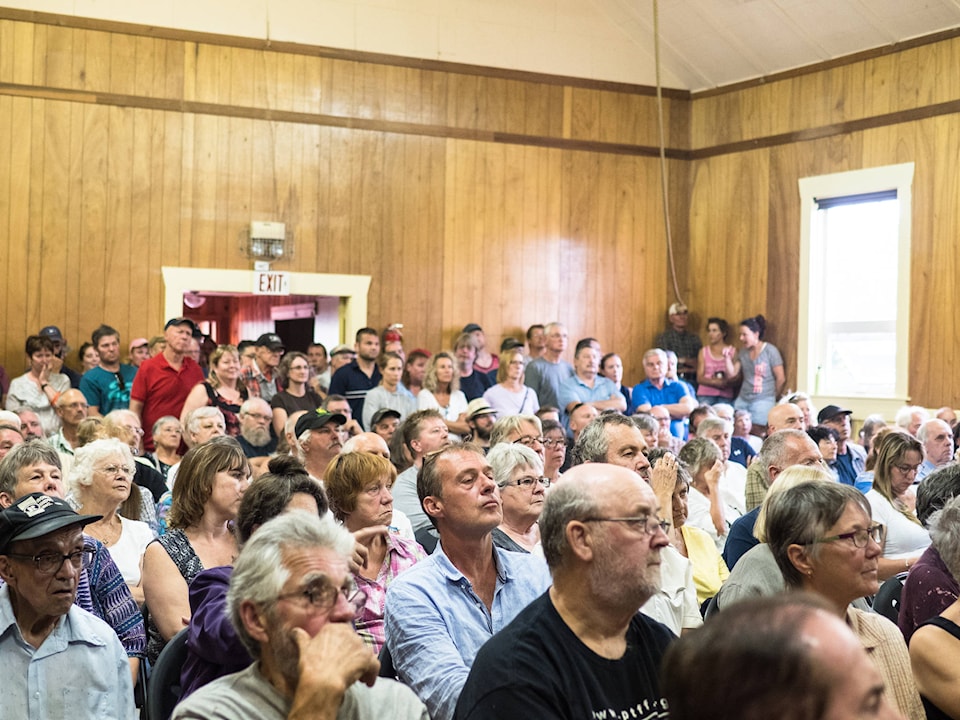By Louis Bockner
The Procter Community Hall was overflowing on Monday evening with concerned residents from Harrop-Procter listening attentively to updates regarding the Harrop wildfire and the evacuation alert that was issued for the community last Thursday.
Mike Allan, B.C. Wildfire Service’s incident commander currently working on the fire, began by showcasing how the fire had reached its current state since it was first reported on July 27. Despite misinformation that the fire had been completely contained several weeks ago Allan said it had only ever been partially contained on the north flank — the direction of the nearest communities.
On the night of August 31, thanks to prevailing winds to the west, the fire climbed out of the Harrop Creek drainage and crossed a thin, steep ridge before moving into the Narrows Creek drainage. This area is now the greatest concern as the fire has been moving approximately 100 meters north per day since Sept. 1.
He said the fire is currently burning in steep, difficult terrain and that air attacks and ground crews would be unsafe and ineffective at this time.
Now burning roughly four kilometres from the nearest structures, Allan and fire fighting crews, along with the help of local contractors, are building a large contingency line that runs parallel to Harrop in order to create defendable land. This guard, located one km south of the community, will also act as the next trigger point meaning that if the officials believe the fire will cross it an evacuation order will put in place.
Allan stressed that they are currently doing everything they can and that the long fire season has put strain on both resources and personnel.
“Nobody thinks that summer is going to last this long,” Allan said. “There’s lots of holes in the dyke and we’ve only got 10 fingers.”
Allan’s slideshow with photos and up-to-date maps will be made available to the public online at rdck.ca.
Travis Abbey, emergency services co-ordinator for the East Kootenay Regional District, then offered some insight into what an evacuation order would look like and asked that people take action during the alert phase to make things go smoothly should an order be put in place. This would include moving valuables, pets and livestock out of the community and making preparations to stay with family and friends.
In the event of an evacuation a reception centre will be set up at Mary Hall on Selkirk College’s Tenth Street campus where evacuees can check in and stay if need be.
“Our biggest priority in an order is to have it not be in a panic,” said Allan. “The biggest complaint will probably be that [the order] is made too early but due to the complications it has to be that way.”
Those complications are mainly due to the single, cable ferry exit point that connects the community to Highway 3A, 20 km northeast of Nelson.
Allan also encouraged residents to sign up for the Emergency Alert System on the RDCK website, which will send important information via cell phones, land lines and email. Residents can also sign up for the Harrop Fire Notifications System, which sends daily text message updates, by texting HARROP to 778-400-1771.
Sophie McLean from the RCMP said that while residents will not be forced from their homes in the event of an evacuation they will be asked to give information as to who is remaining.
She added that evacuees will not be allowed be allowed back in to “ensure people’s safety and eliminate break and enters, and property crime,” although some exceptions may be made to residents who are outside the community when the order is called.
